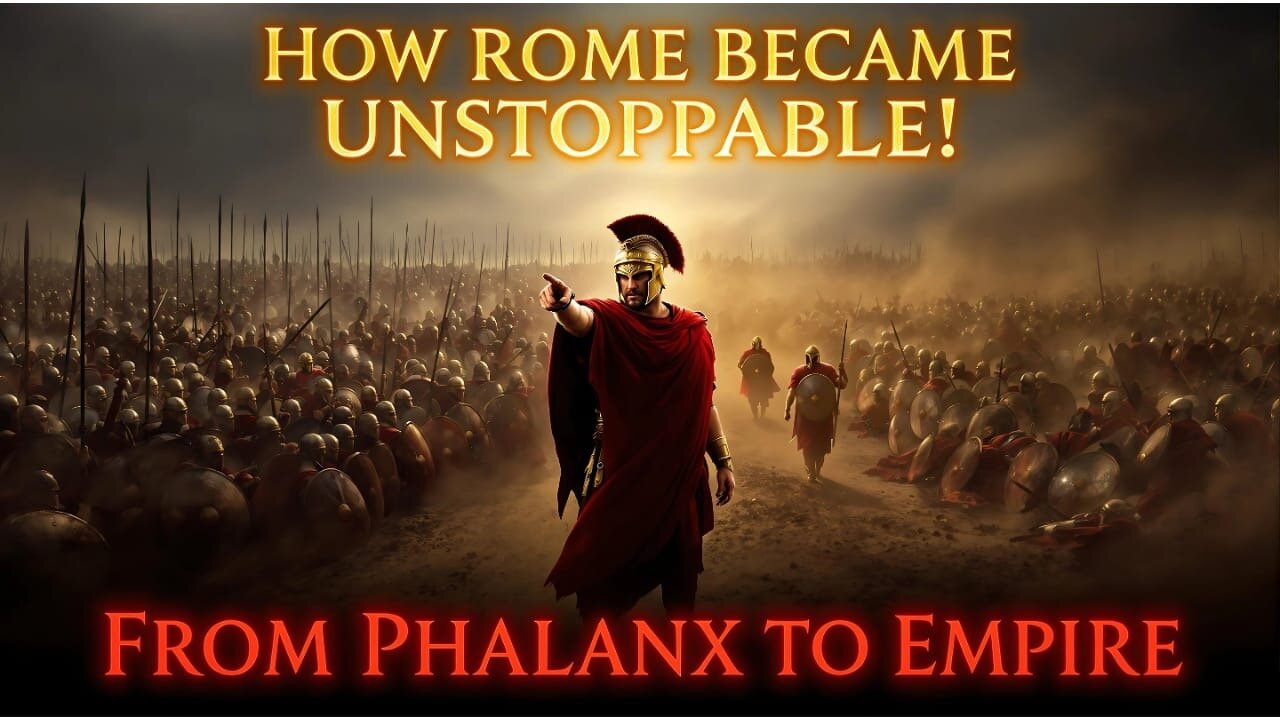Premium Only Content

The military evolution of the Roman Empire Part 1
The military evolution of the Roman Empire was marked by several key transformations:
- Early Republic (509–27 BC):
Initially, Rome's army was a citizen militia based on the hoplite phalanx. Reforms by leaders like Marius introduced a professional standing army, with soldiers serving for longer terms in exchange for land upon retirement.
- Imperial Era (27 BC – AD 476):
Augustus further professionalized the army, creating a more centralized and disciplined force with legions stationed across the empire. The legions were supplemented by auxiliary units, which included non-citizen soldiers offering specialized skills.
- Tactical Adaptations:
Over centuries, Roman tactics evolved from the rigid phalanx to the more flexible manipular system, then to the cohort system, allowing for greater mobility and adaptability on the battlefield.
- Late Empire Changes:
Facing numerous threats, the late Roman military saw the introduction of more cavalry, including elite units like the cataphracts, and an increased reliance on barbarian federates (foederati) due to manpower shortages.
- Fortifications and Strategy:
Romans excelled in engineering, constructing extensive fortifications like the Limes Germanicus and Hadrian's Wall, which not only defended but also defined the empire's borders.
- Decline and Fall:
As the empire's resources dwindled, the quality of the military declined, with less training and more reliance on barbarian mercenaries, contributing to the eventual fall of the Western Roman Empire.
This evolution reflects Rome's adaptability, from a city-state's militia to one of history's most powerful and enduring military forces.
-
 4:15:00
4:15:00
Nerdrotic
15 hours ago $49.21 earnedCaptain Falcon America REVIEW, Disney Ending DEI? Rings of Power RETURNS | Friday Night Tights #341
214K36 -
 9:34:03
9:34:03
FusedAegisTV
23 hours agoMario Galaxy, Batman, Real Talk/Politics, & MORE - V-Day 💗 Friday Variety Stream!
60.2K1 -
 1:10:49
1:10:49
Vigilant News Network
11 hours agoRFK Jr. Drops a Stunning Announcement | The Daily Dose
79.9K42 -
 49:49
49:49
Candace Show Podcast
14 hours agoEXCLUSIVE: Blake & Ryan’s Desperate Legal Strategy Exposed! | Candace Ep 147
193K135 -
 1:32:20
1:32:20
2 MIKES LIVE
12 hours ago2 MIKES LIVE #180 with guest Kyle Rittenhouse!
54.8K4 -
 9:40
9:40
Tactical Advisor
17 hours agoBest Home Defense Shotgun Build | Genesis Gen 12
48.7K4 -
 56:44
56:44
VSiNLive
14 hours ago $4.38 earnedFollow the Money with Mitch Moss & Pauly Howard | Hour 1
73.2K1 -
 1:05:48
1:05:48
The Amber May Show
17 hours ago $3.61 earnedBig Balls | You Know It's Bad When Legacy Media Reports On Big Balls | Sam Anthony
42.2K7 -
 LIVE
LIVE
SoniCentric
1 day agoEnjoy a COZY Valentine's Day Escape to Paris with the BEST blend of Romantic Music
127 watching -
 1:59:52
1:59:52
Revenge of the Cis
15 hours agoEpisode 1447: Love Train
63.7K8